I received the Nitecore NU20 CRI from Nitecore for the review.
The Nitecore NU20 CRI is a small and lightweight headlamp, made for trial runners. It is available with an XP-G2 Cool White emitter, or with a Nichia 219B HICRI emitter (the one I got). There are also different colorations of the light body and the headband.
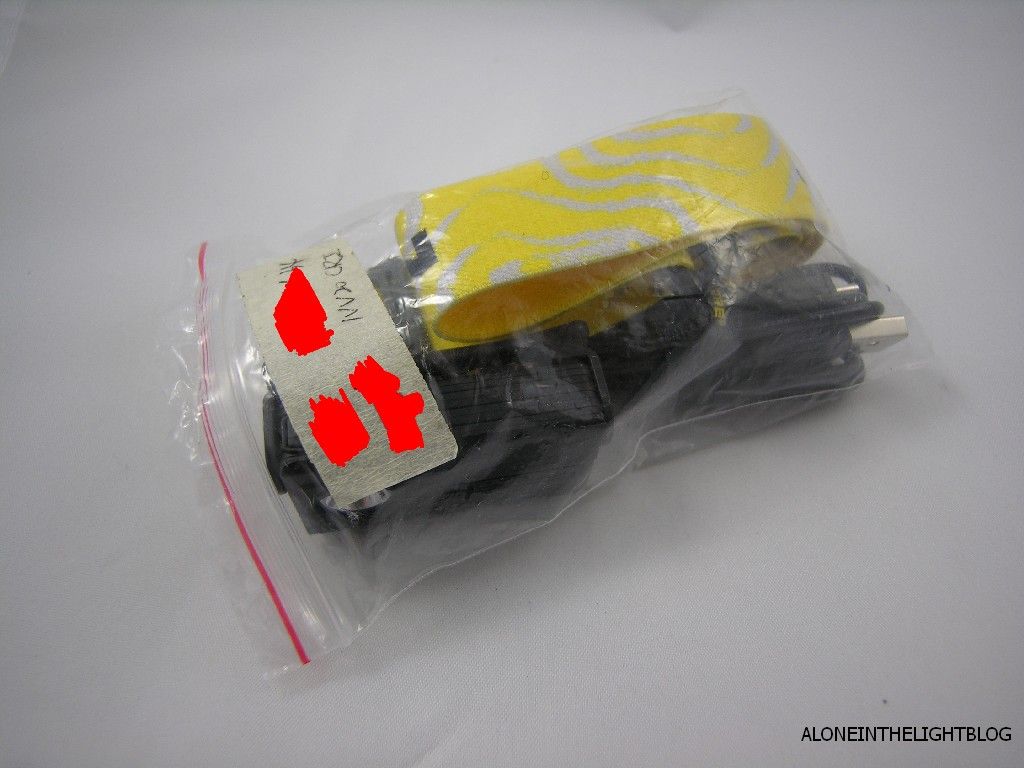
The light came in this simple box. Obviously this is not the box you’ll receive when buying this light.

Light, headband, and micro USB cable.
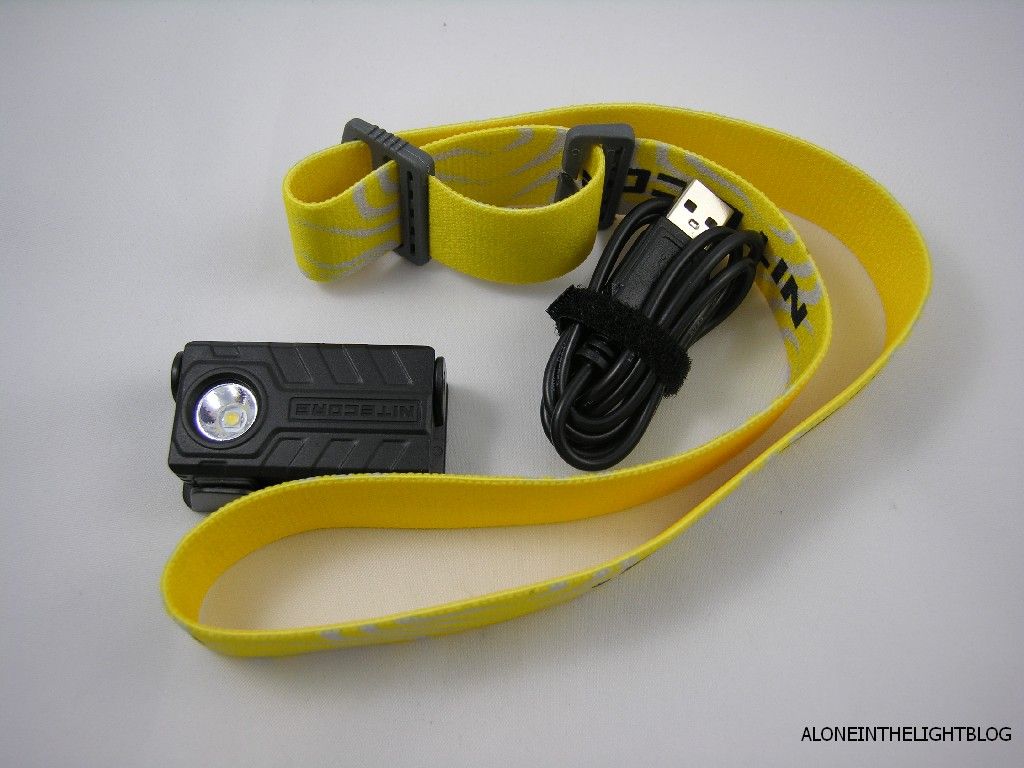
The NU20 is small indeed.
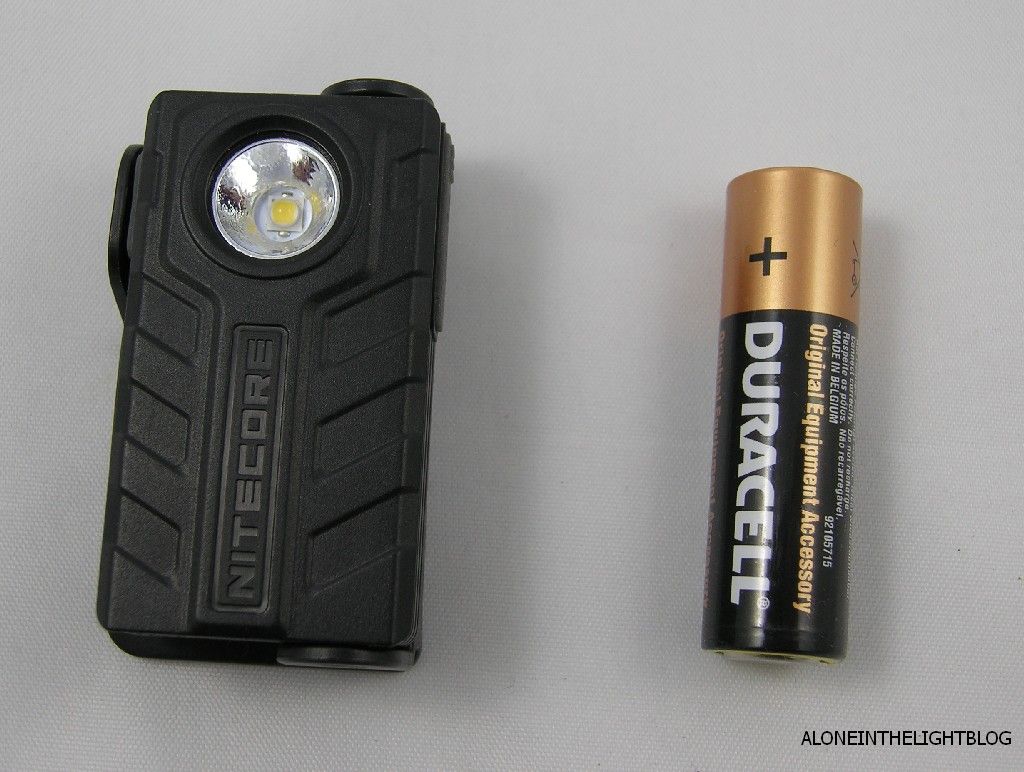
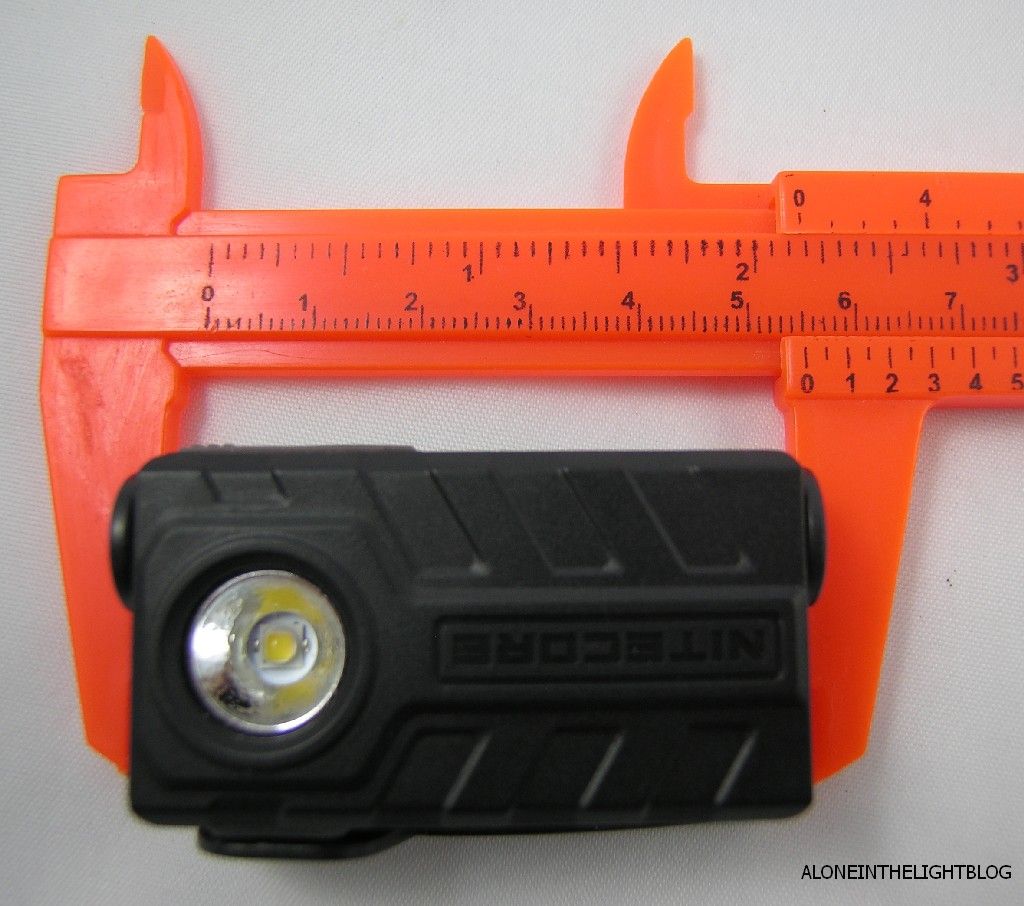
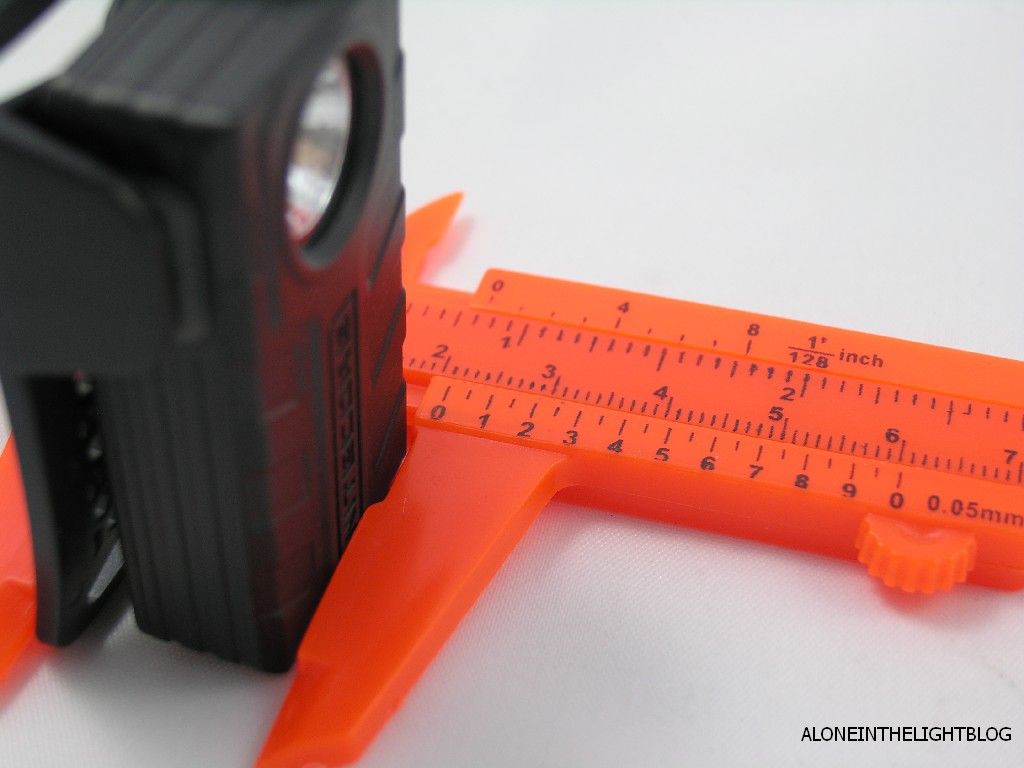
The emitter is slightly off center. Nothing that would affect the beam.
The NU20 is attached to a plastic base that allows the light to be mounted on the headband and to be tilted at certain fixed angles.
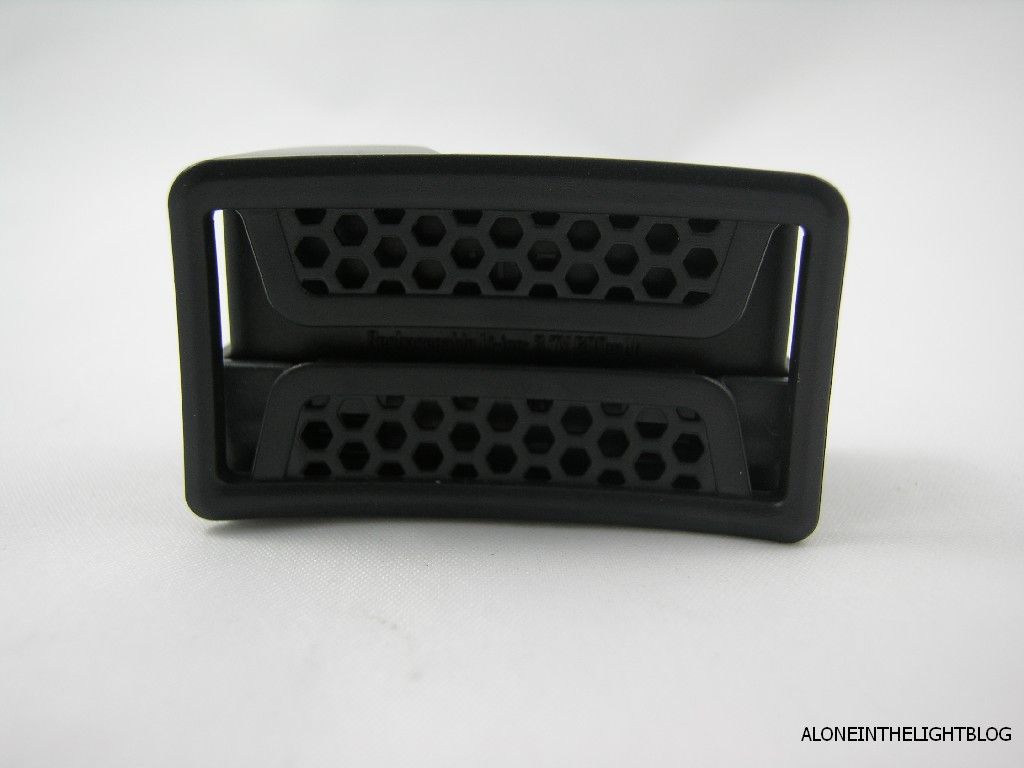
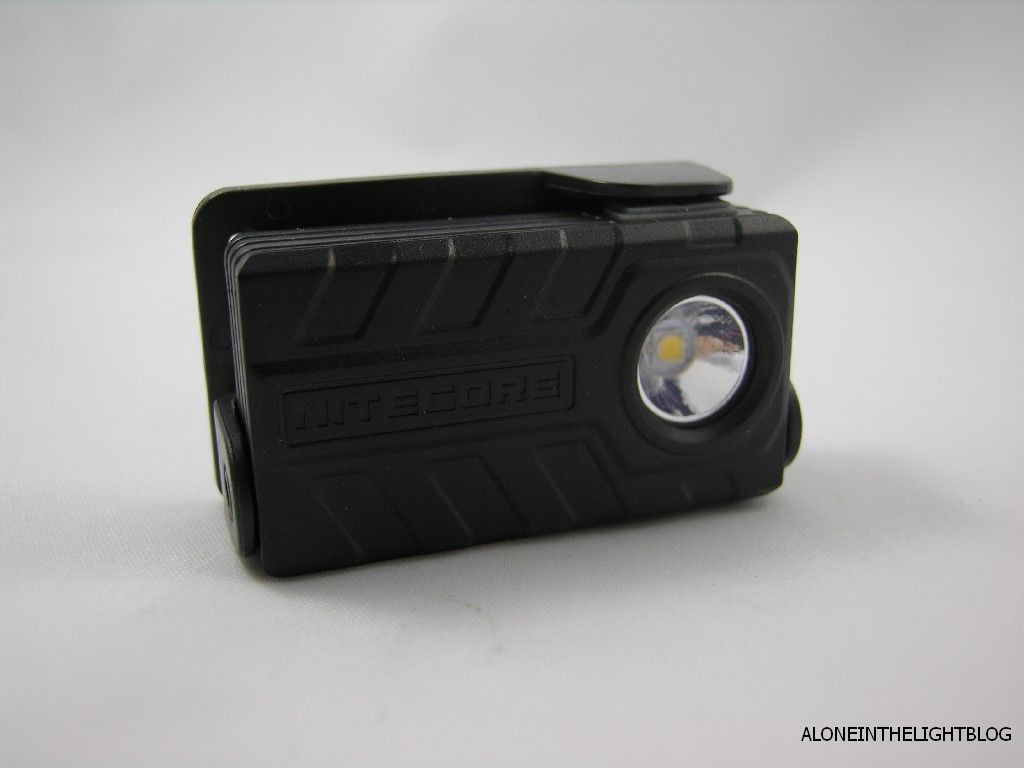
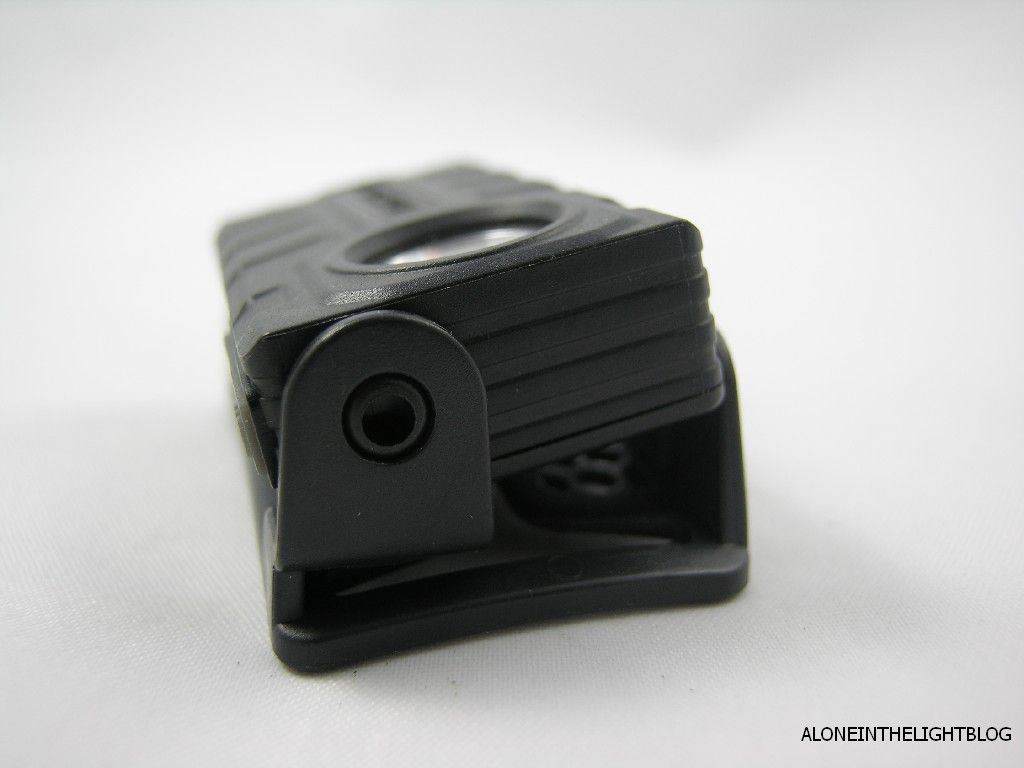
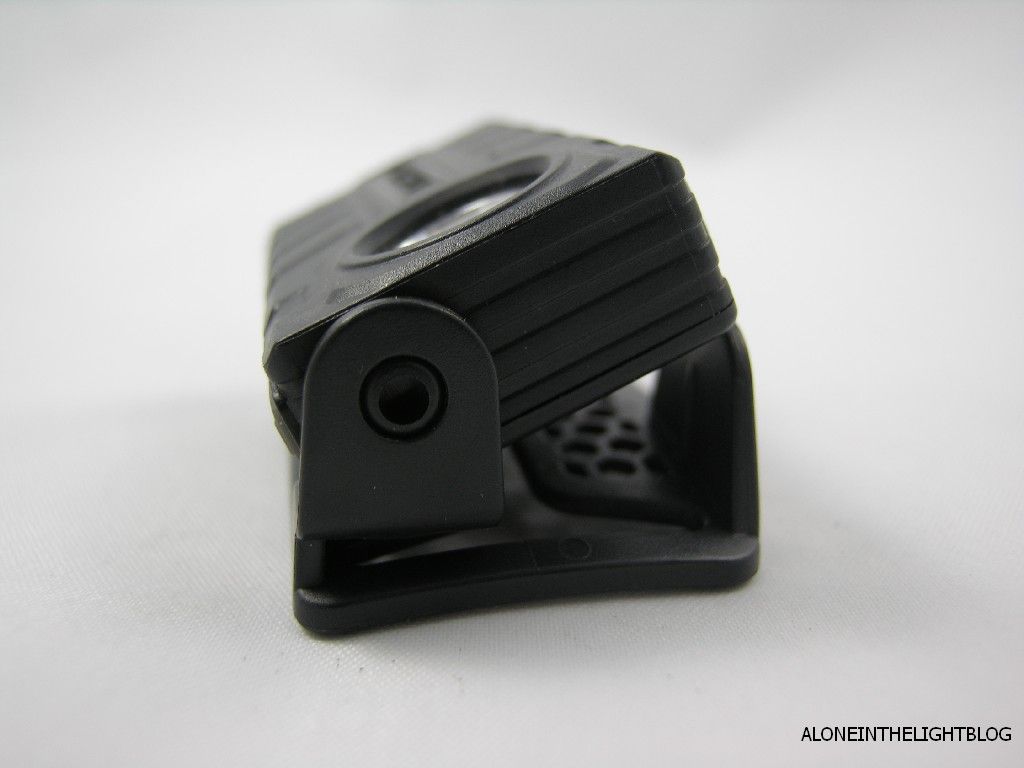
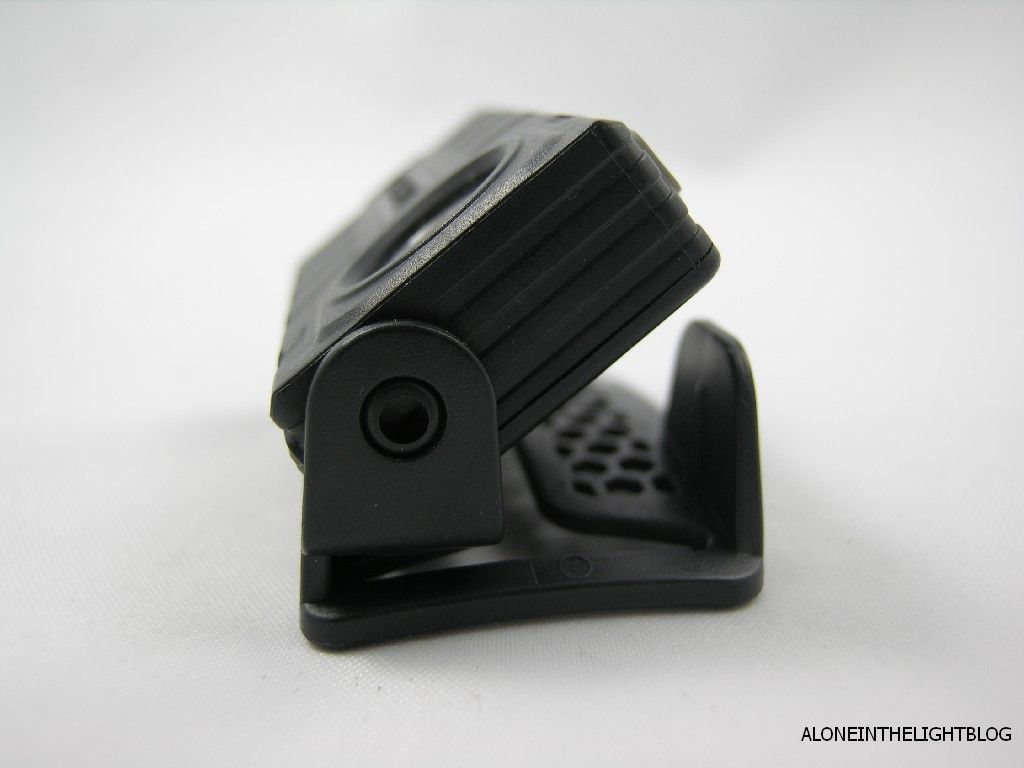
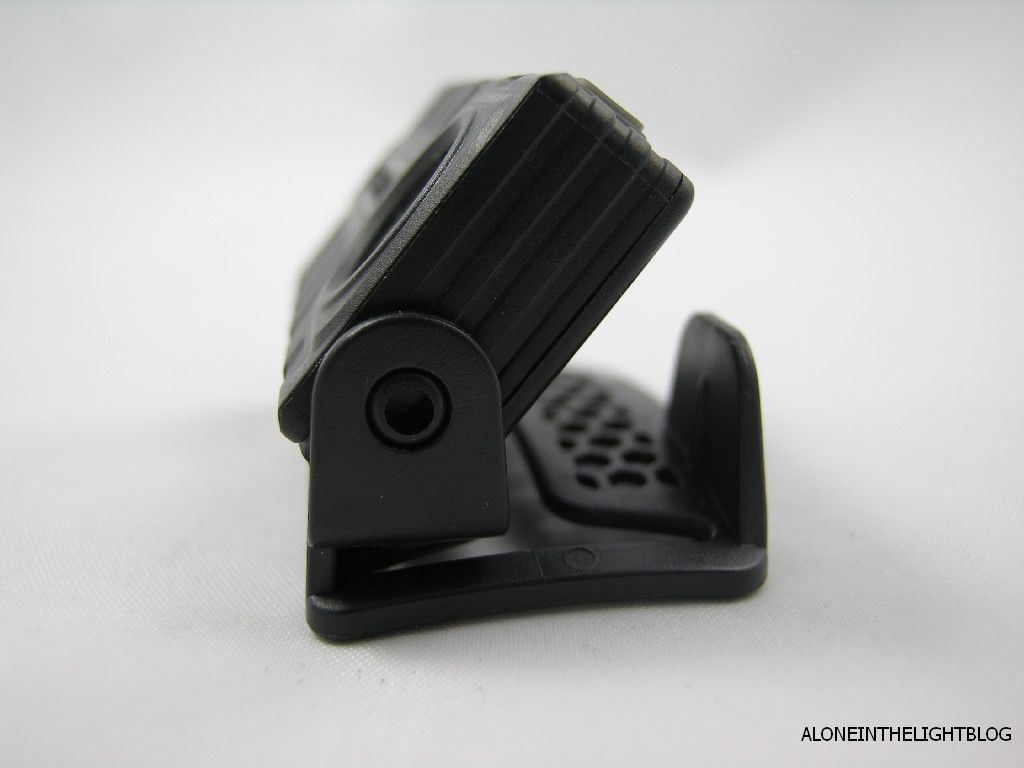
You can detach the Nu20 from the mount.
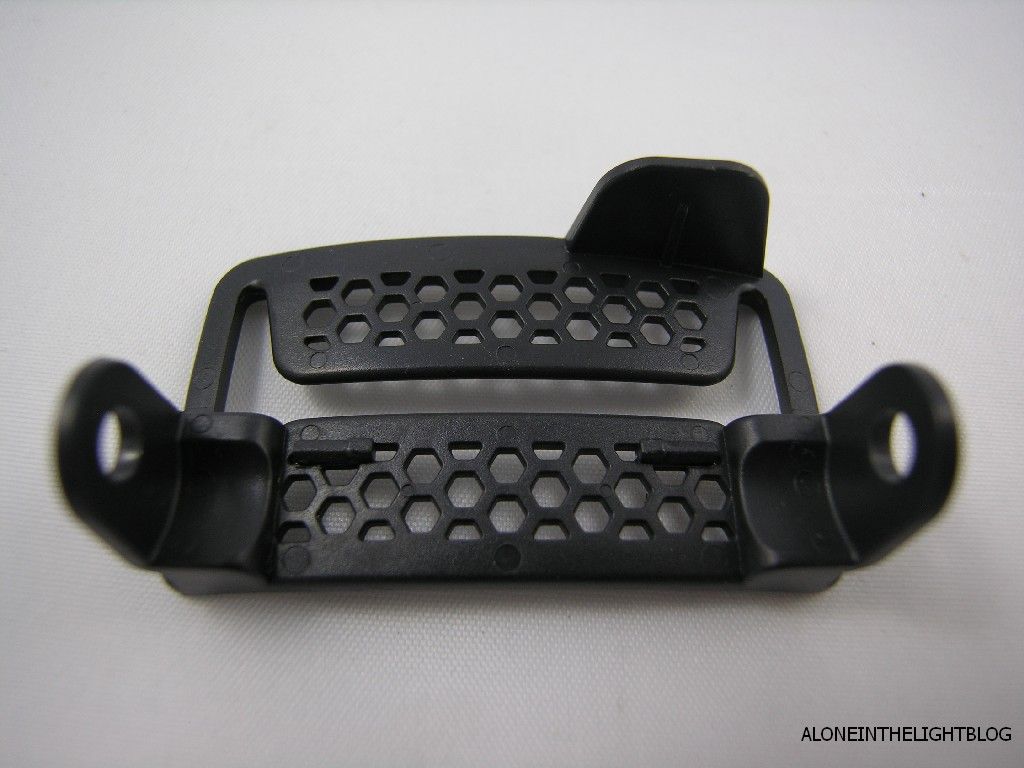
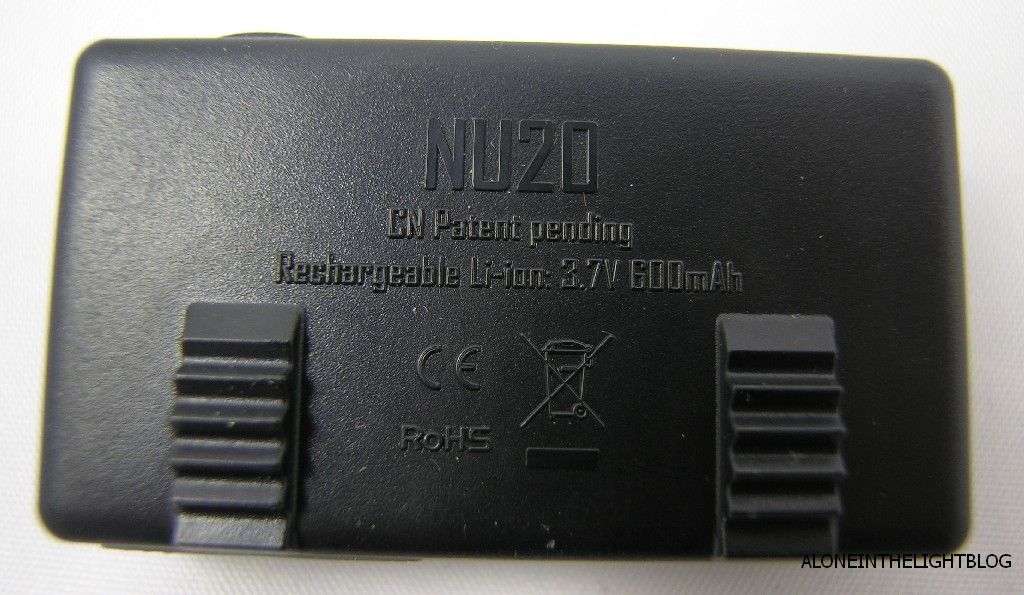
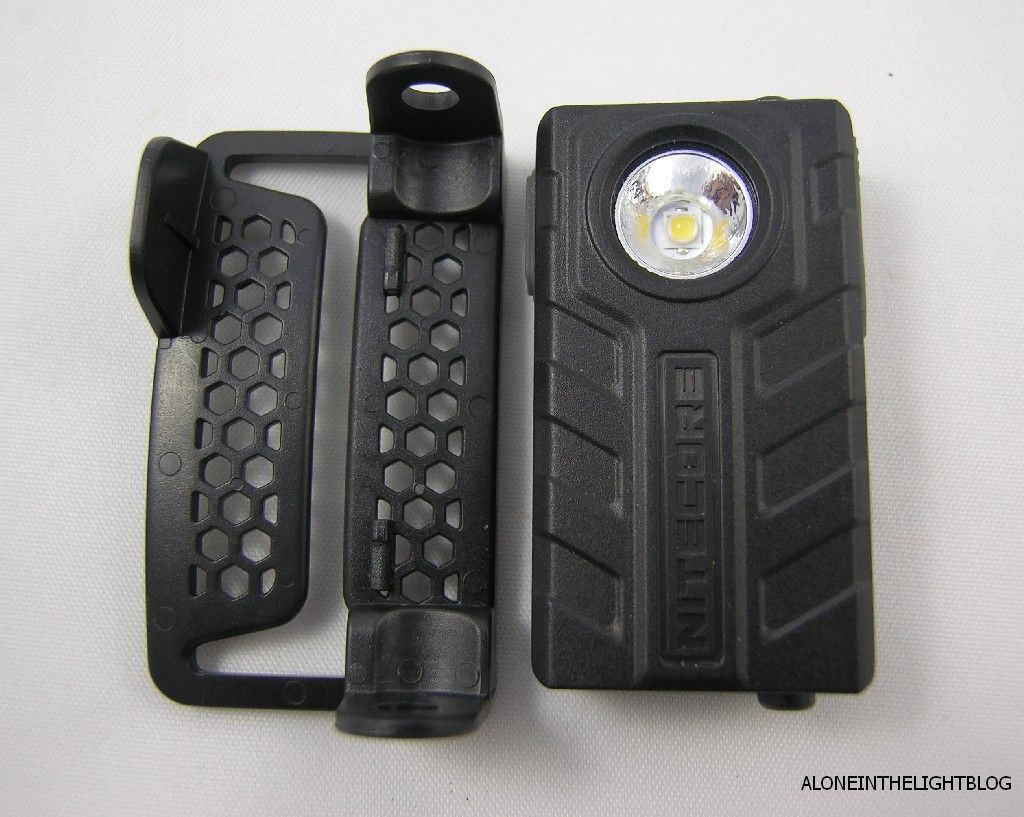
On top of the light there is the electronic switch with a rubber cover. The switch it is accessible only when the light is tilted, because the mount has a cover that prevents accessing the switch when the light is in the vertical position.
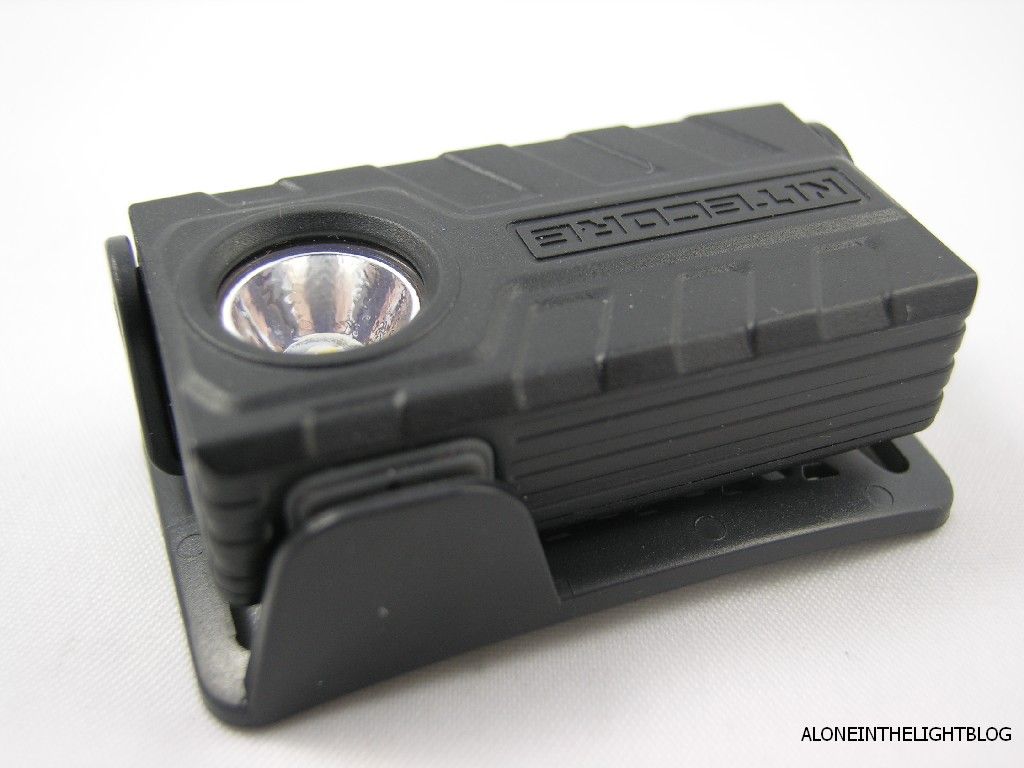

On the bottom of the light there is the micro USB port for charging the integrated 600mAh battery. It has a rubber cover to protect it.
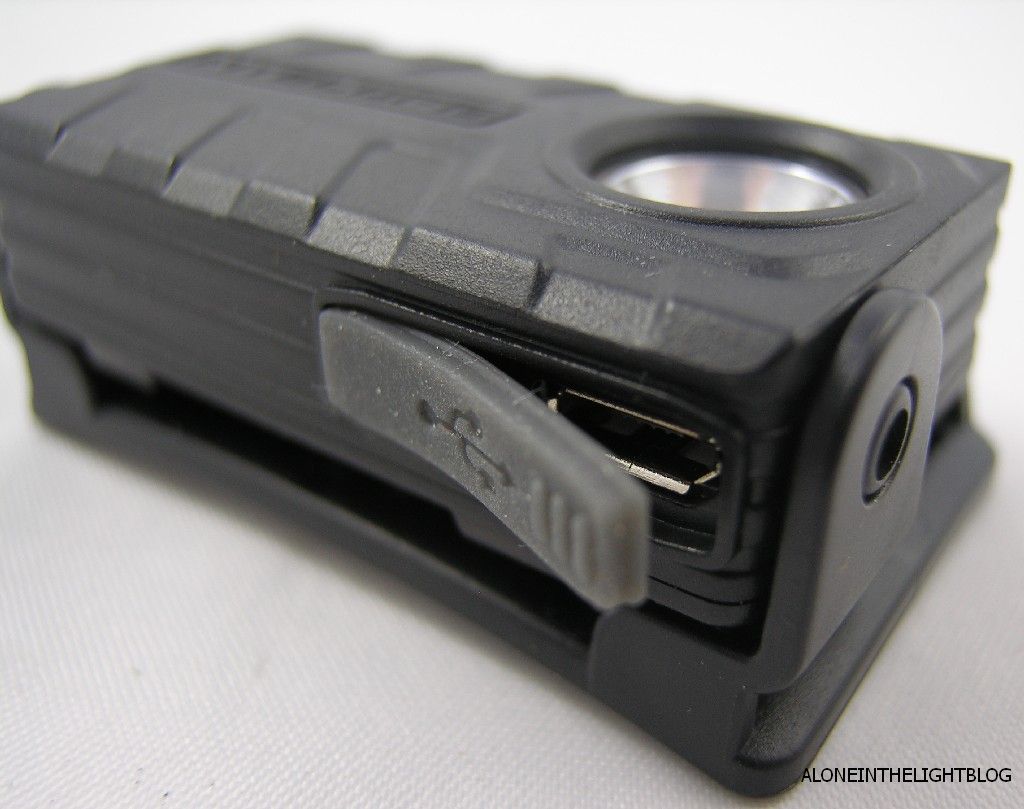

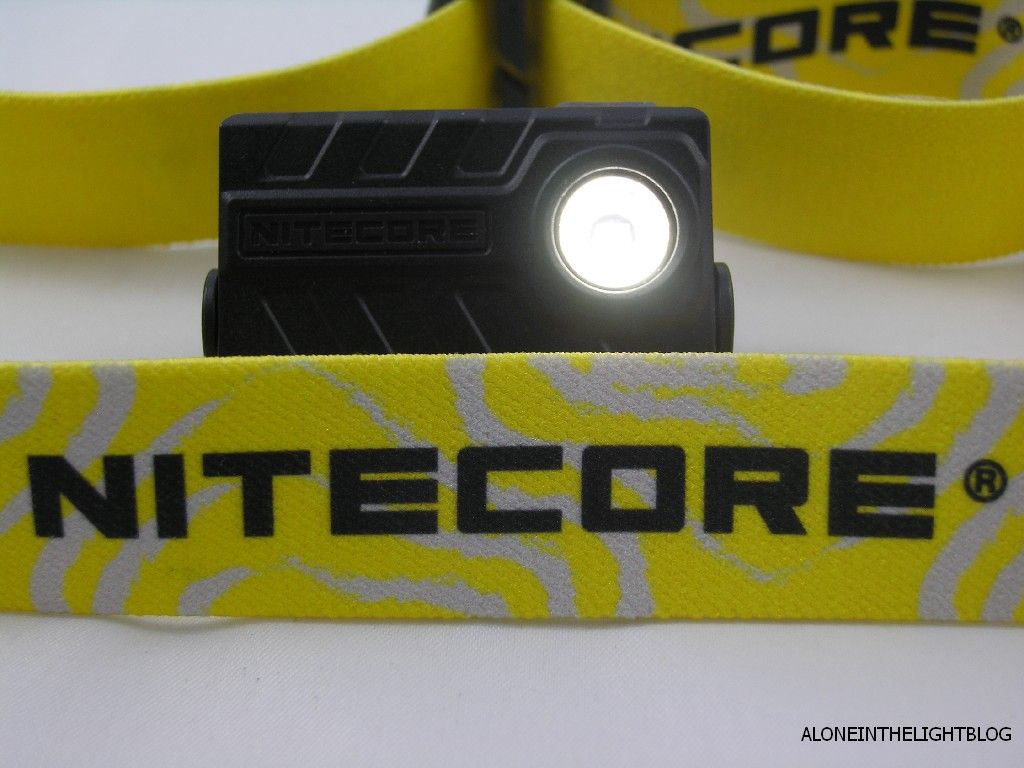
The headband has good tension and works fine.
UI
Press once to turn the light on at low mode. If you want to change level, you have to press within 3 seconds the switch, cycling to medium and high mode.
If you press the switch after the light has been turned on for 3 seconds, the light will turn off.
When the light is on, keep pressed the switch to activate turbo mode.
When the light is off, a 1 second long press of the switch will activate the battery indicator: the led under the switch will blink:
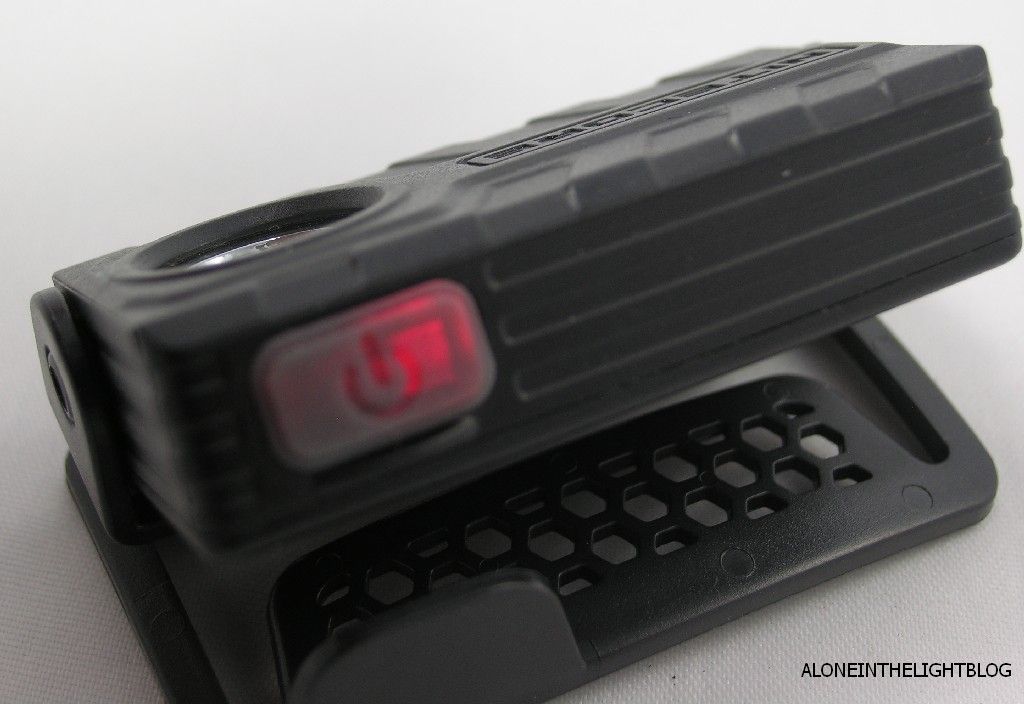
- 3 times >50%
- 2 times <50%
- 1 time <10%
When the light is off, a 3 seconds long press of the switch will activate the SOS. Within 3 seconds from the activation of this mode, pressing again the switch will activate the beacon.
When charging the light, the LED under the switch will be red when charging, and green when the charging is finished. The light can be used while in charge.
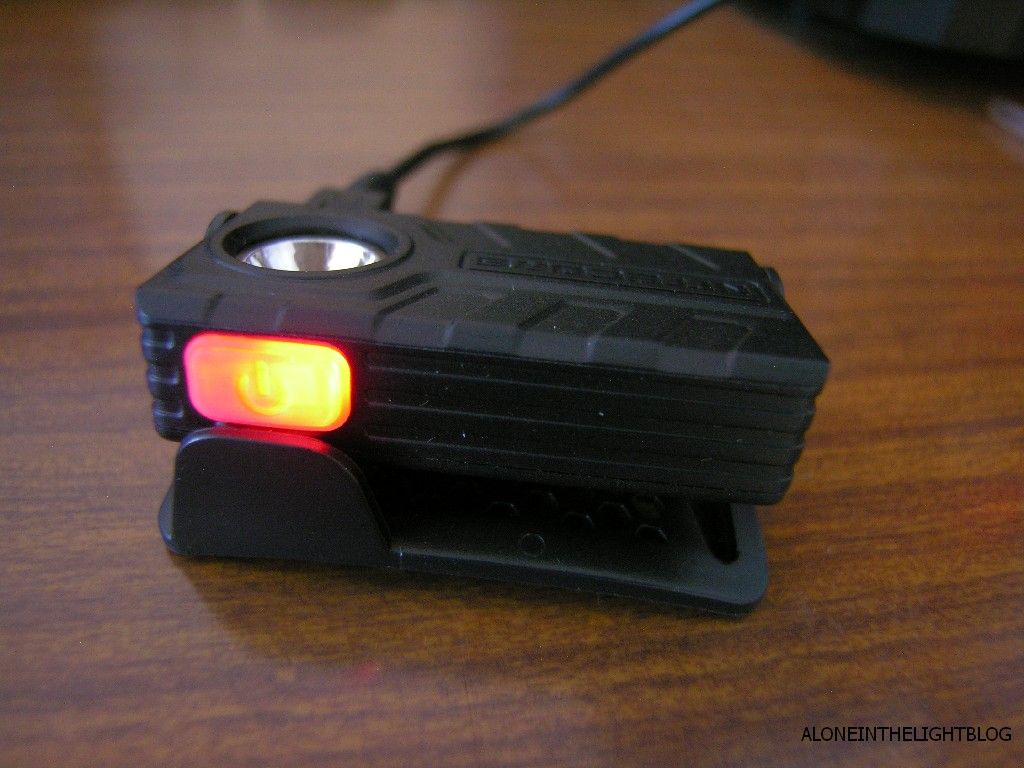

Beamshot at 0.5 meters from the wall


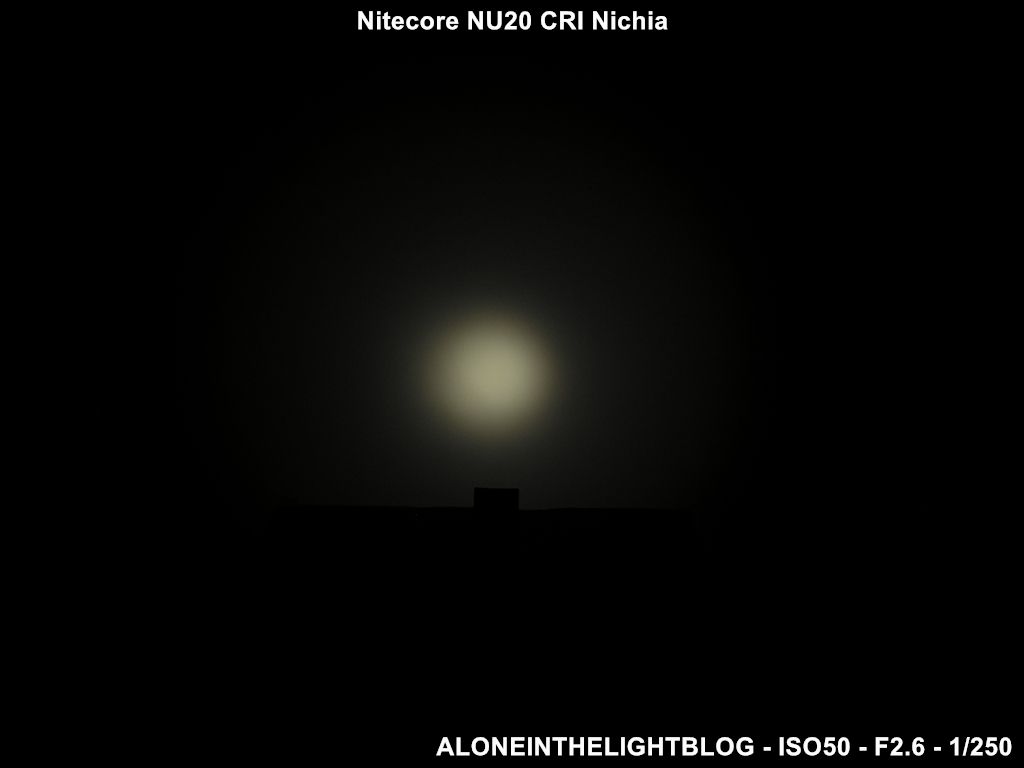
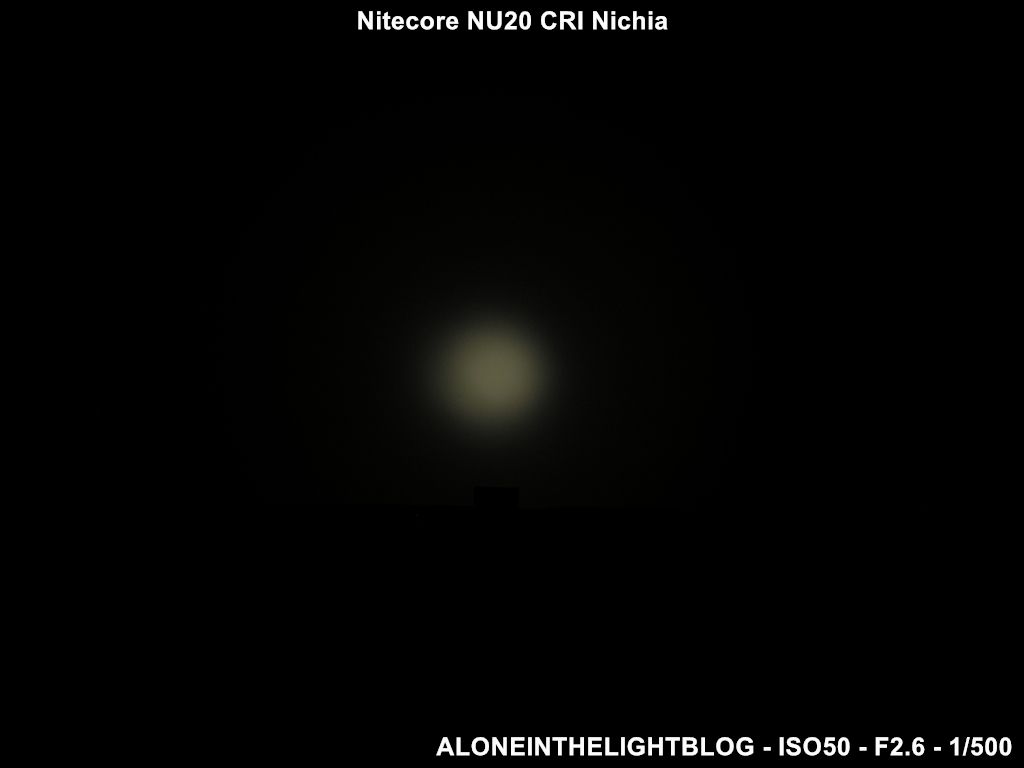
Here against the Nitecore TIP CRI, that has the same Nichia emitter
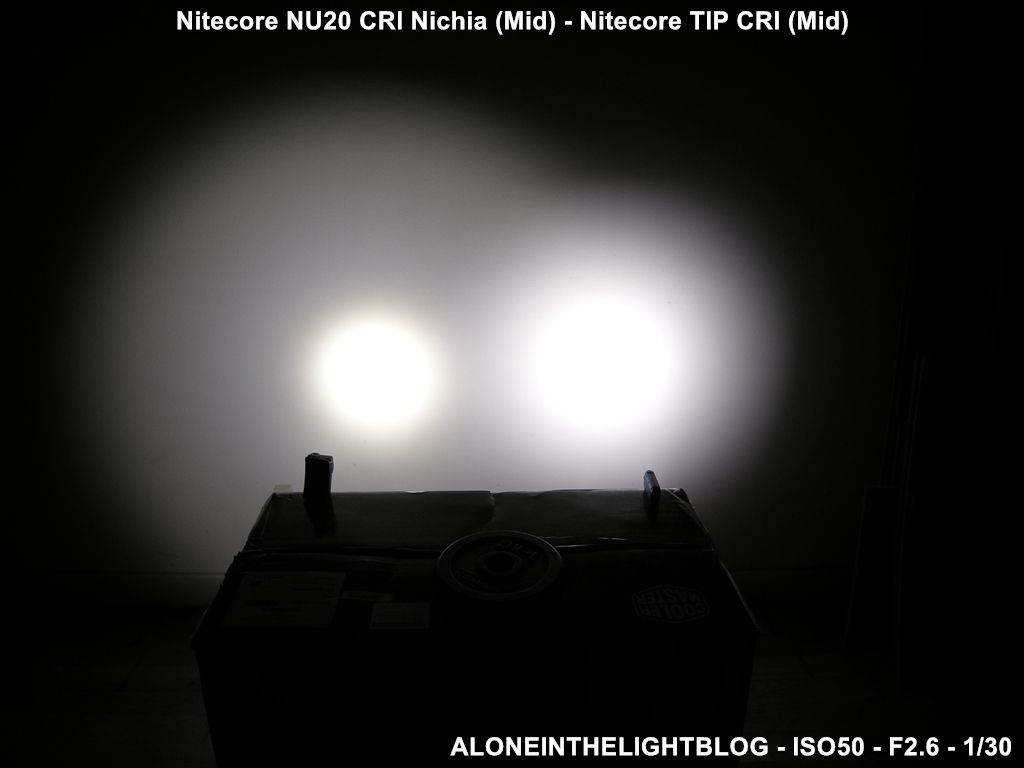
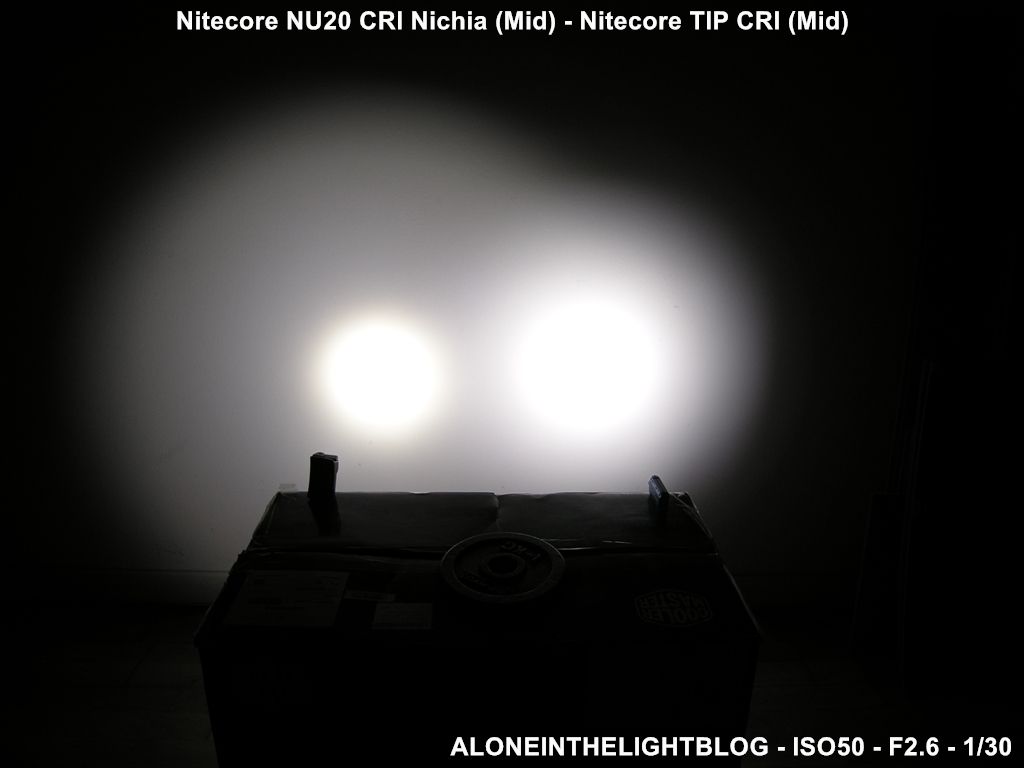
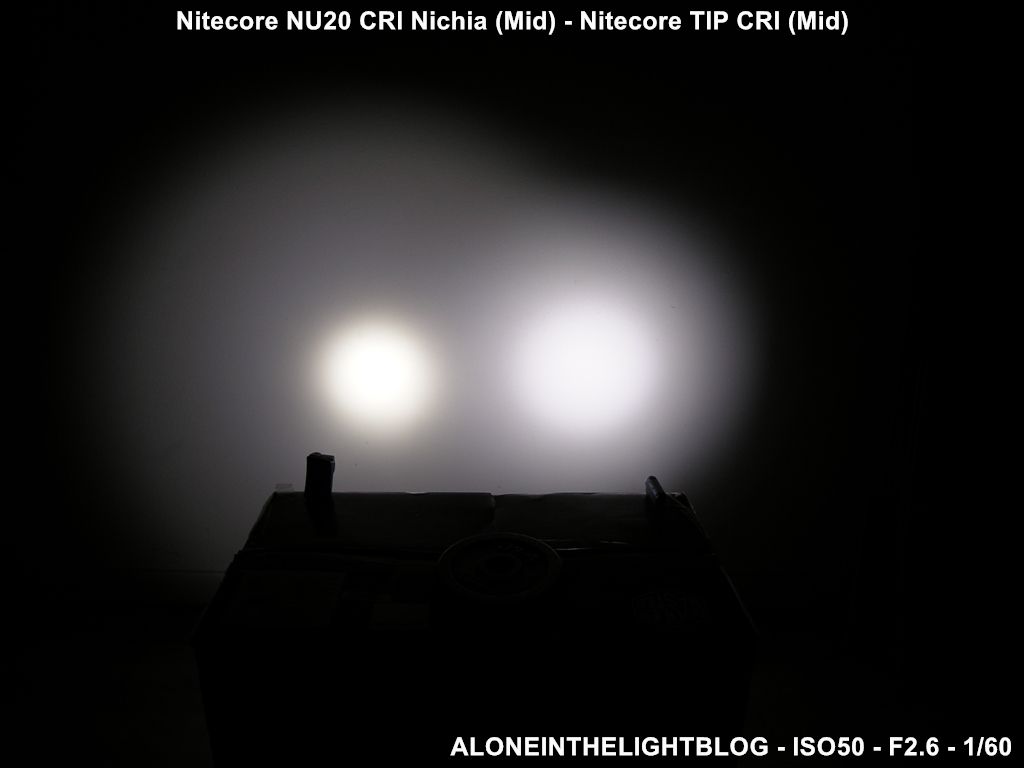
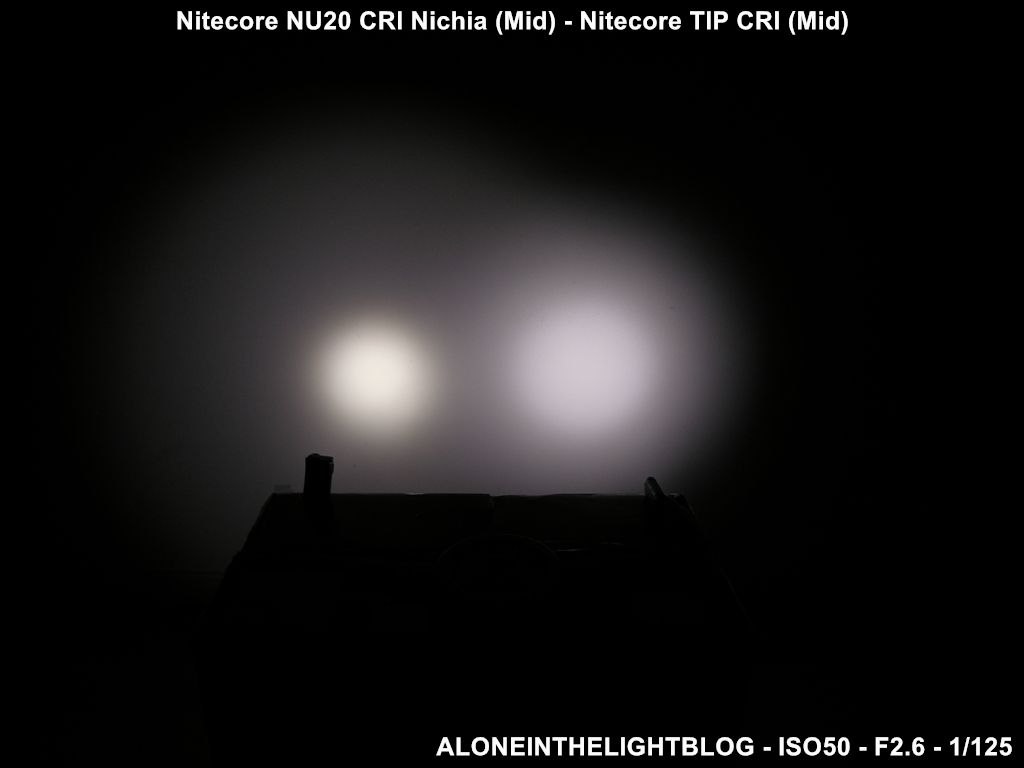
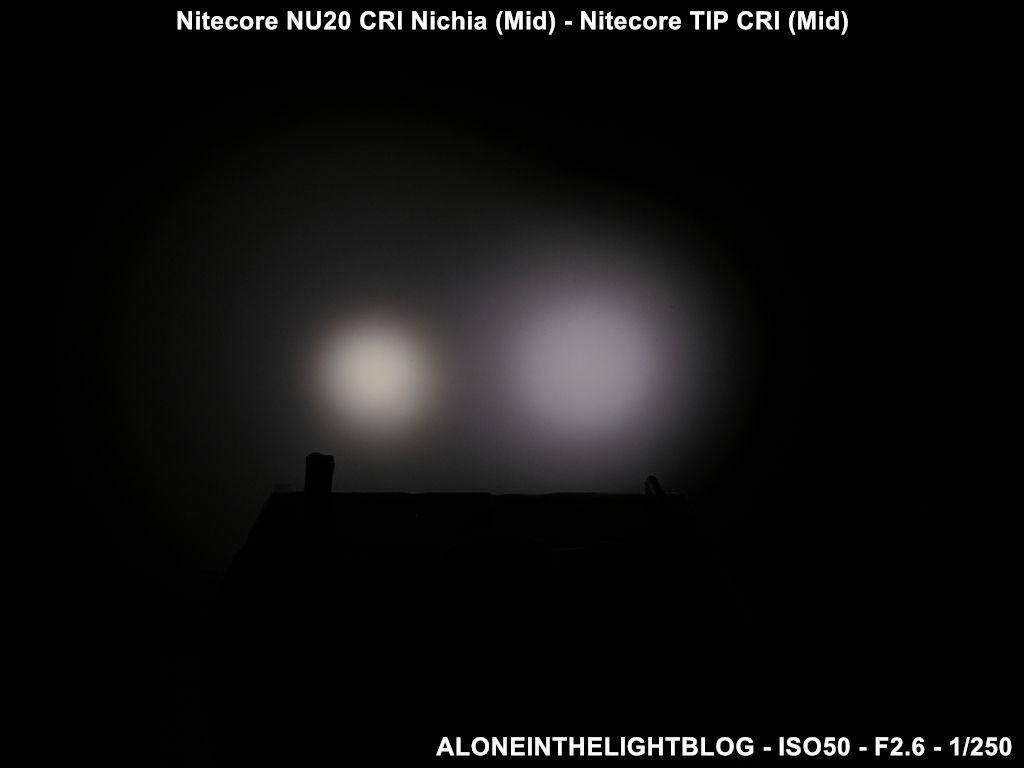
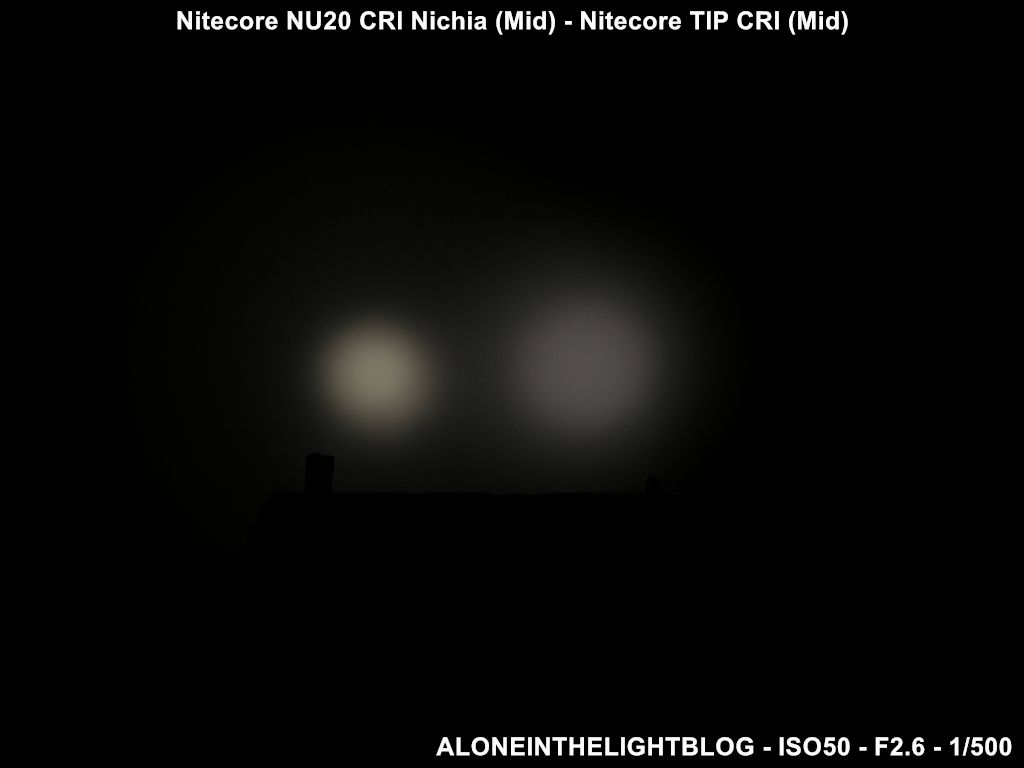
Group pic with the Nitecore TIP CRI and Manker E21, all with Nichia emitter, set at mid mode (all around 20 lumens).
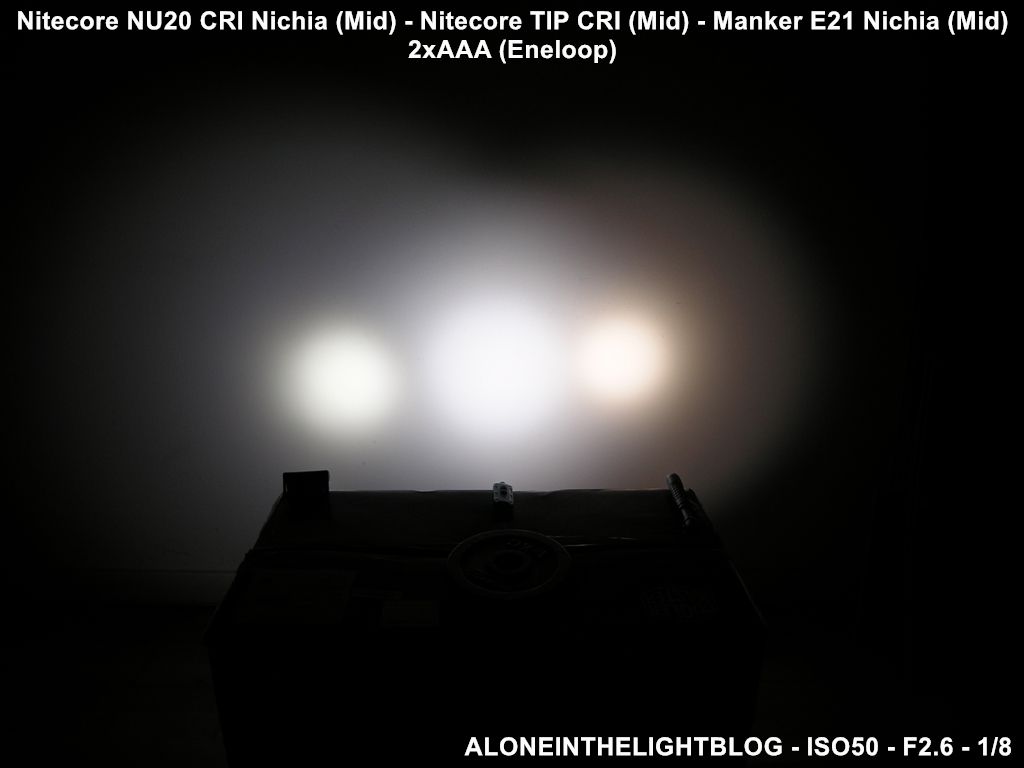

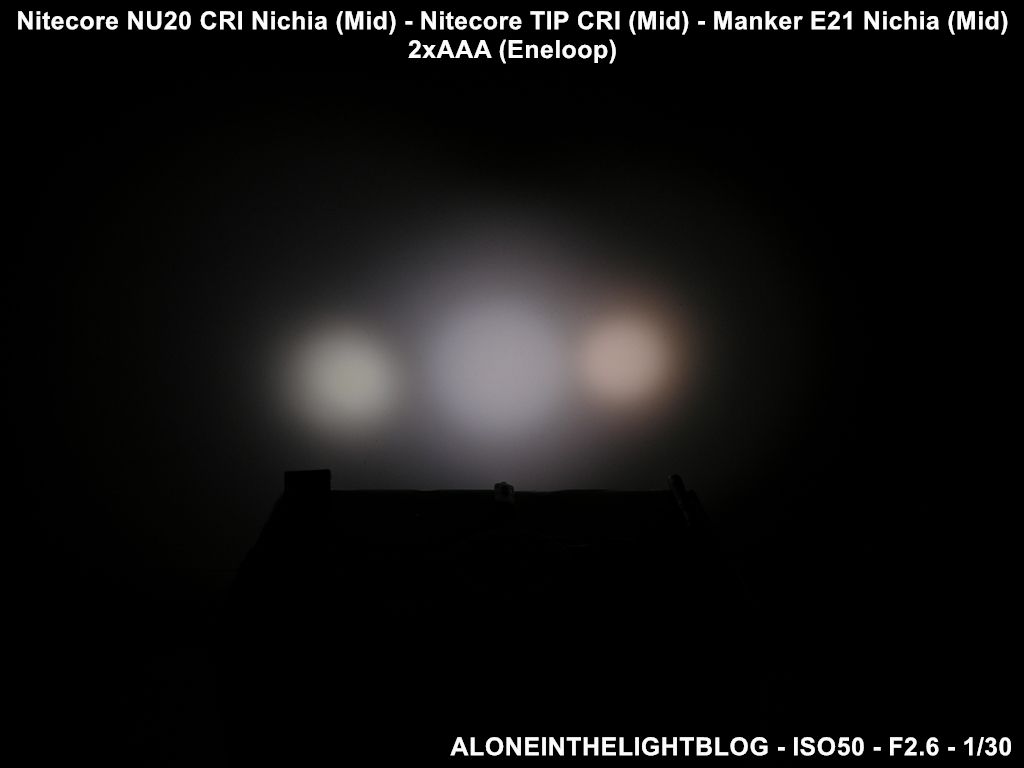

The spill on the NU20 CRI is wider compared to the other lights.
Outdoor Beamshots
The 4” shot are a bit overexposed, the 2” shot are underexposed. Imagine something in between for the real brightness. The tint is rightly depicted in the 2” shot.
A couple of shot for each tilting option, starting with the light vertical.
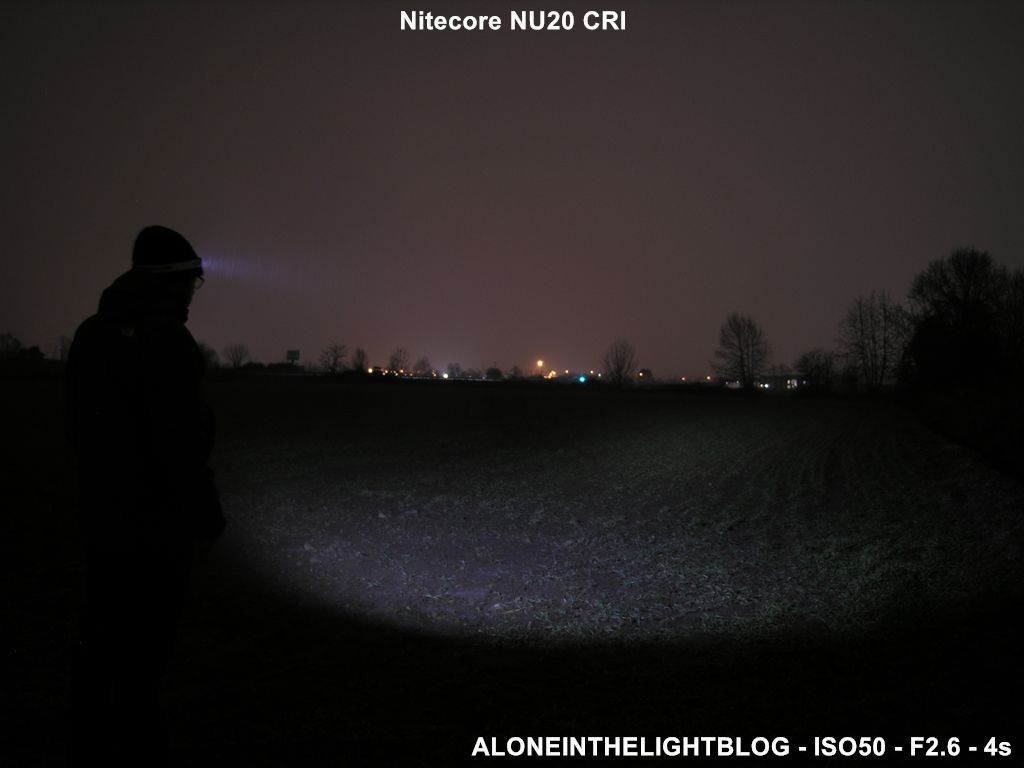
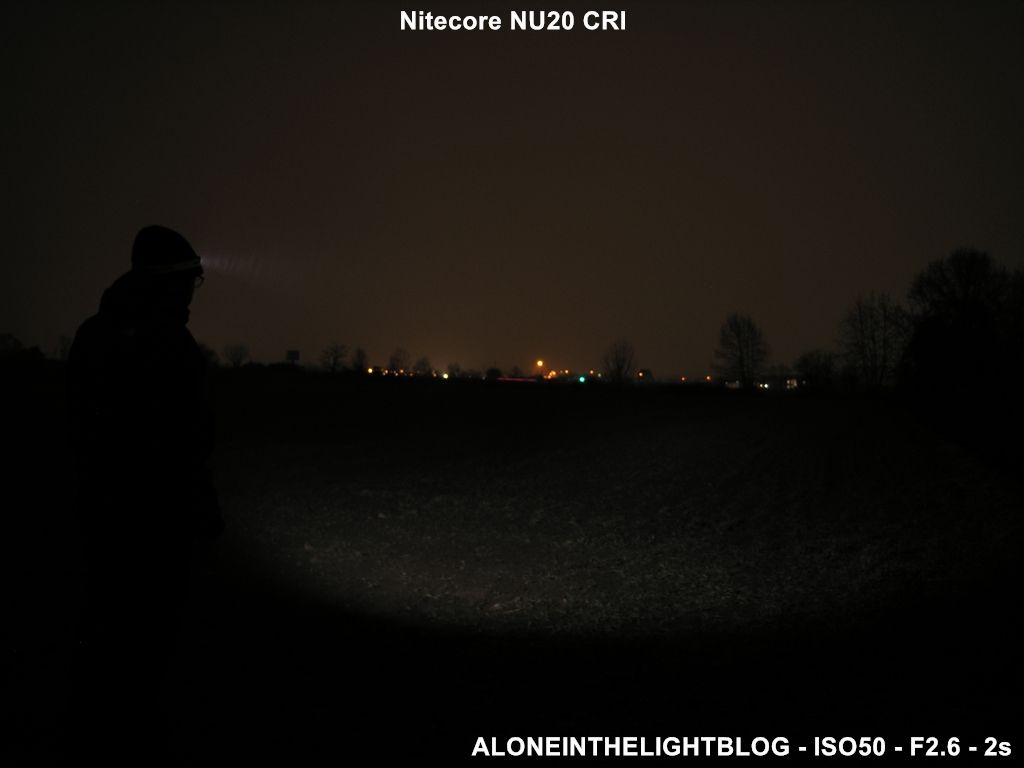
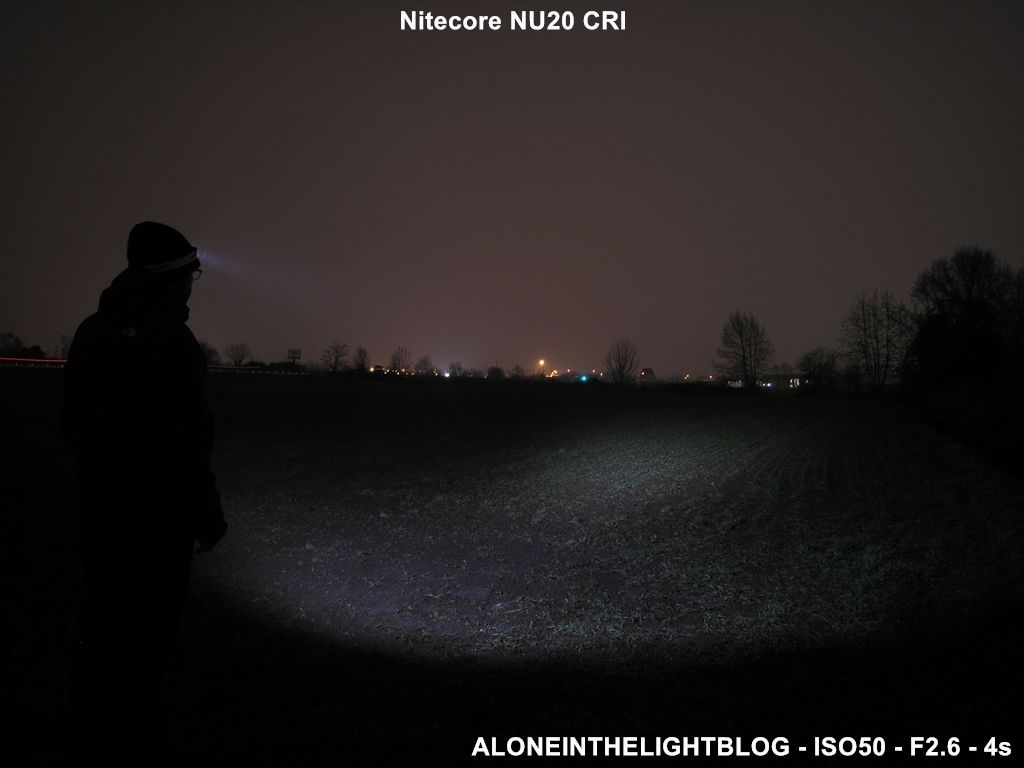

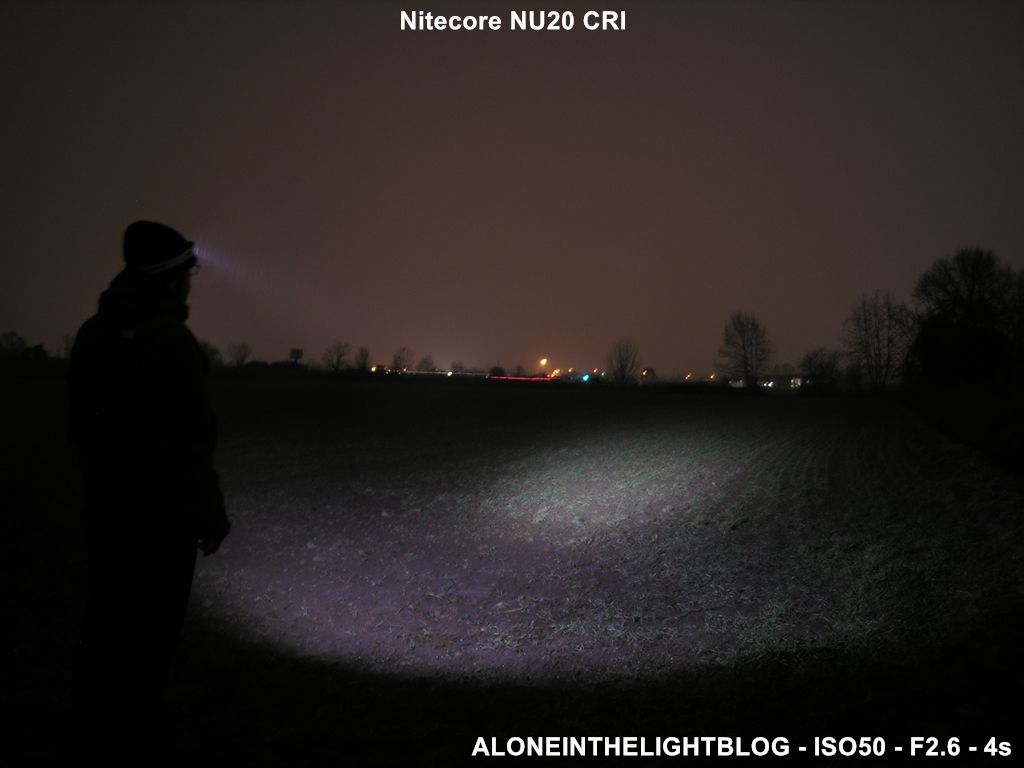
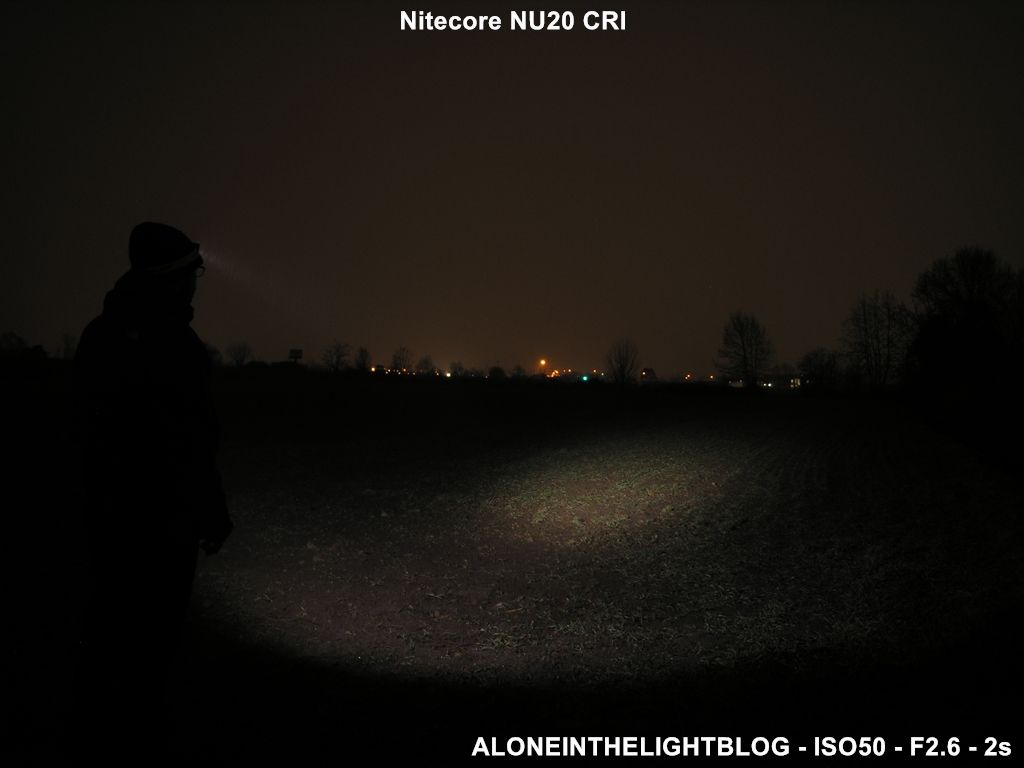
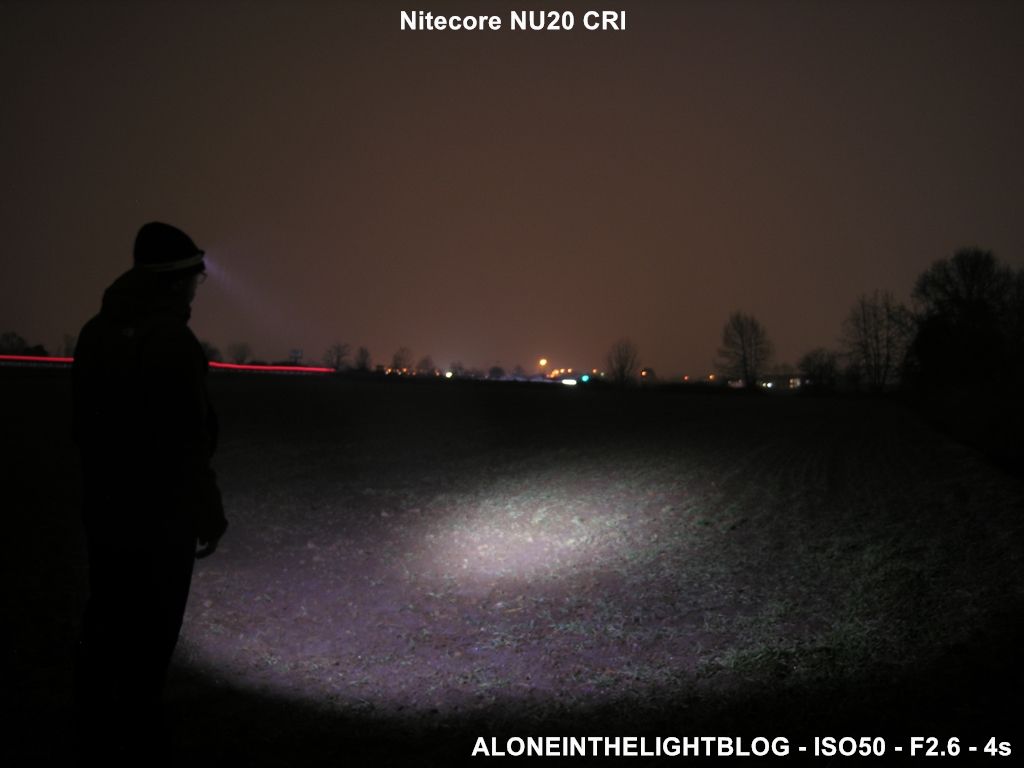
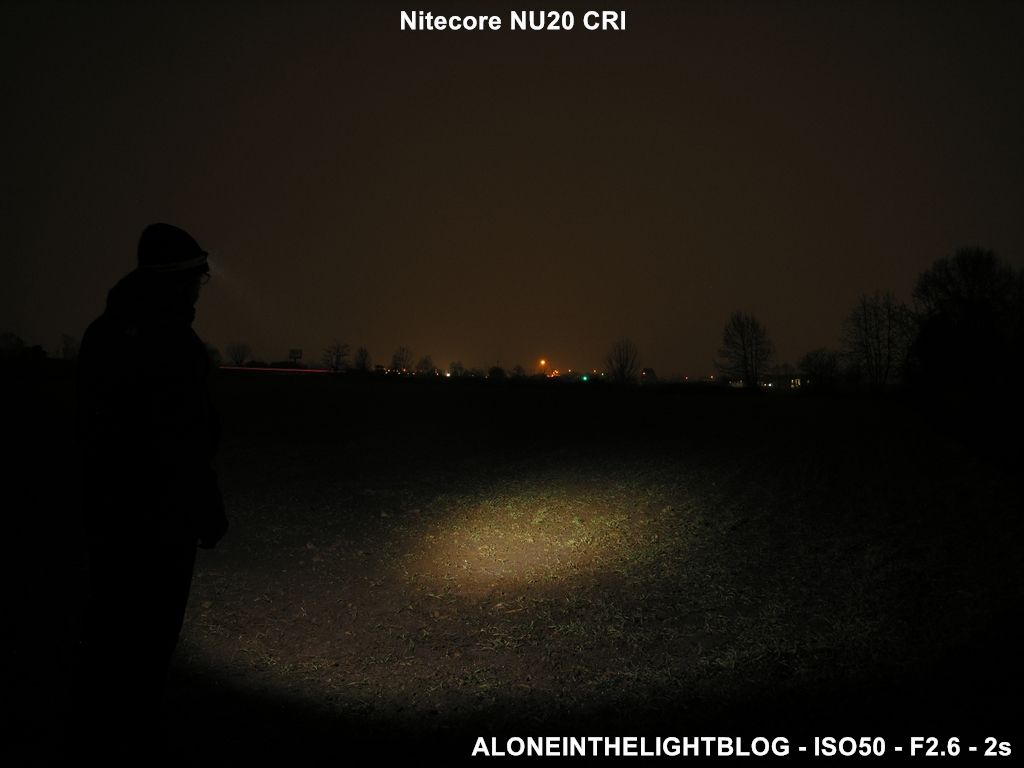
A gif with the 4” setting for all the tilting options

Output and runtime
Both tested with the internal battery.
The first sample I received had completely different values from Nitecore specs. I got another one to test.
The output is consistent between the 2 samples
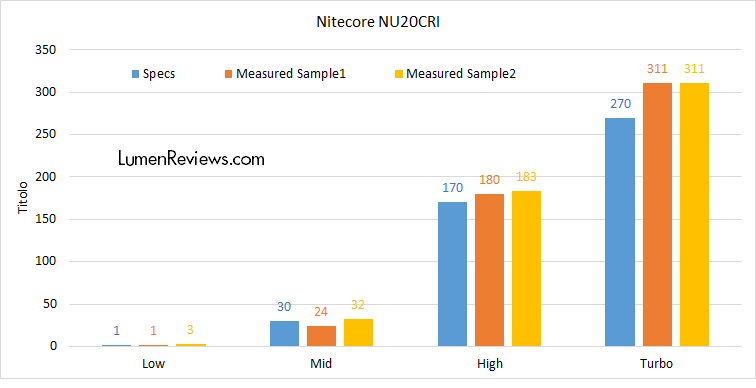
But the runtime and regulation is different between the 2 samples.
The plots below are the one of the second sample.
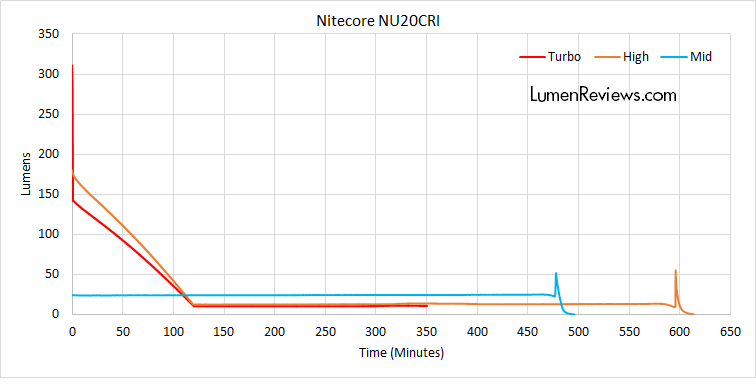
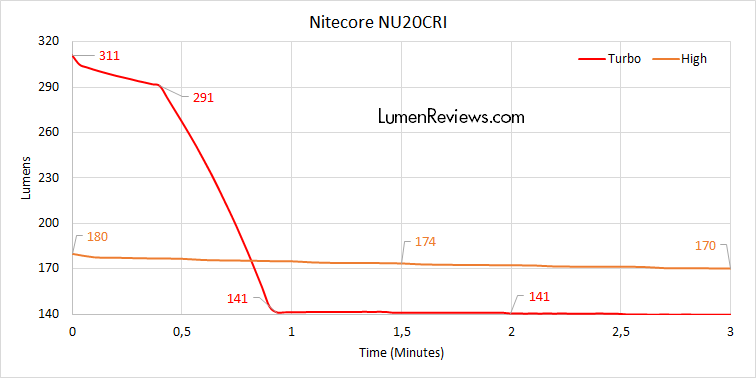
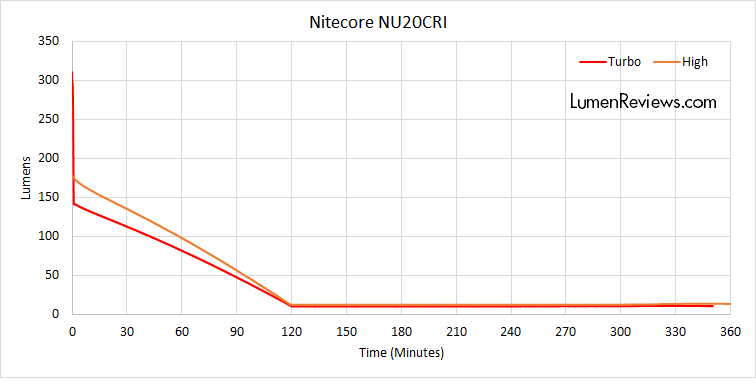
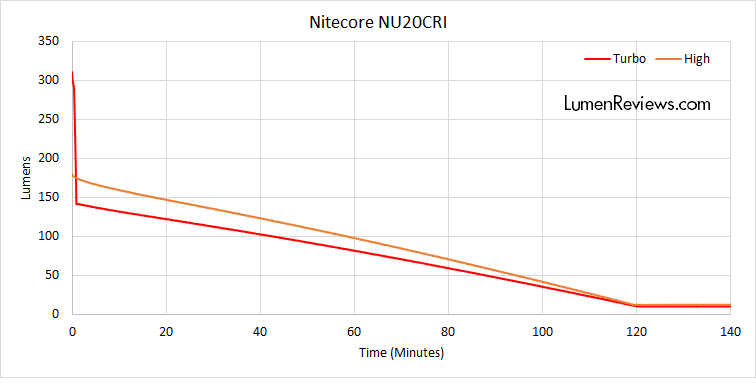
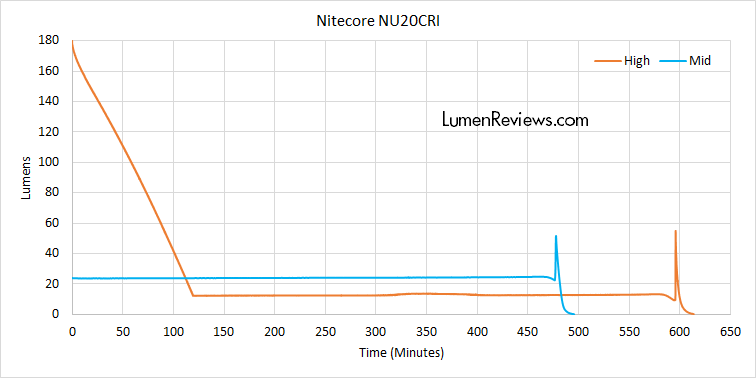
.
.
My thoughts
This light is well built and finished, as you would expect from Nitecore.
The connection between the NU20 and the plastic base is strong enough that when running around the light won’t change inclination, and it require some pressure to be angled.
I have no experience of trial running, but I participated to 5K runs, I often go for a run when is dark, and I have done plenty of hiking and biking in the night.
From my perspective (a flashaholic), a light that I would use to run in the outdoor should have the following characteristics:
- Have a good tint. The better colour rendering of the neutral and white tints also impact human ability to perceive space and profundity. It also penetrates better fog and mist.
- Have a good weight-size/capacity ratio. The light should be lightweight but maintain a runtime good enough for your running times. For example a 10180 light is small and lightweight but it doesn’t have enough runtime; while a 26650 light has great runtime but it is much bigger and heavier.
- Have a good balance of throw/spill. The spill should be wide enough to arrive at your feet (to avoid stumbling on rocks, into roots…). The spot should not be very visible, even at close distances (for example when you have to pass through a uncut wood full of plants), but still give you a decent throw (some meters). This is useful both for seeing obstacles at full speed at a distance, but also for looking a bit around when you may loose orientation.
- UI: have quick access to an high output mode, don’t shut down to change levels.
- Don’t shut down suddenly and have low/reserve levels. Ever been out for a run? Do you know when you’ll be back? You’ll be back when you’ll be back, not when you thought you would be. A lot of things can happen when you are out for a run that can elongate your run: you can hurt, or injure yourself, you may have a bad run and be too tired to run back as quickly as you thought, your shoes can break, weather can change. That’s why the light should have levels suitable for reasonably longer runtimes but still allowing to move at a lower speed (no running when injured). For the same reason, the light should not turn off suddenly, but when the batteries are low it should switch to a “reserve level”. Remember that regular people could be tricked by a great regulation into thinking that the battery is still full, when in fact it is almost empty. Keep in mind that people may not remember to charge their batteries every run.
So, how does this NU20 CRI perform as a trail light?
- Tint: checked, good NW tint with good CRI. But I’d like it to be warmer.
- Weight-Size/Capacity: the NU20CRI is lightweight (50grams), small, and packs a lithium ion battery (the most energy efficient currently available), with a declared 600mAh capacity (similar to a RCR battery). Integrated battery means less weight and size (no need to make a chassis openable, no need of threads…), you can recharge it on the way to your run (during your car or motorbike drive), but also that you can’t replace the battery, neither neither home or in the mid of a run. This has to be considered.
- Output: The levels are well spaced, but I’d like to rearrange from 1-30-170-270 lumens to 20-80-170-270. When running 1 lumen is not useful, while 20 lumens is low enough to allow moving and have good runtime; and the 140 lumens gap (from 30 to 170 lumens) is now reduced at 60 (from 20 to 80 lumens).
- Beam: the light has enough throw for its purpose, however, I’d like the spill to be wider. You saw in the above pic, that I have to incline the NU20 toward the ground. This will also lower the spot making the light throw less and making visible the spot on the ground.
- UI: the light does have quick access to turbo mode while it’s on, and it is useful for signalling your presence, watching something further, or moving through a difficult path. I also like that the stepdown from the turbo is gradual and not sudden. One think I don’t like, but I inexplicably find on other trial lights, is that if you have been using the light for more than 3 seconds, it will shut off in order to change level. This means that if I want to increase brightness, I may have (depending on the path) to stop my run, change level, and begin running again.
Maybe it is something that trail runner can make sense, but as a flashaholic, it does not make much sense.
- Low/reserve modes: the regulation on this light allow a good runtime on all levels, but at the cost of additional stepdowns.
Hopefully I made justice to another good Nitecore product. I would really like to ask all the trial runners that are reading this review to post their impression and their opinion on all the rant I have written above, so that I can maybe make sense of some obvious things that I don’t get.
In addition to that, the Nitecore NU20CRI can be a good all around headlamp, good for a gif!t (several colours, easy interface, integrated battery, easy to recharge).
Thanks to: AntoLed for the camera and the luxmeter.
